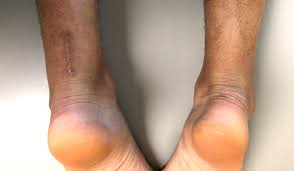What is the Recovery Process Like After Achilles Heel Surgery?

Introduction
Achilles heel surgery is a medical procedure designed to repair damage to the Achilles tendon, a vital structure that connects the calf muscle to the heel bone. This procedure is typically recommended when conservative treatments fail to address issues such as Achilles tendonitis, rupture, or other severe injuries. The recovery process following Achilles heel surgery can vary depending on the type of surgery performed, the patient’s overall health, and adherence to rehabilitation guidelines. In this article, we will explore what the recovery process entails and what patients can expect at different stages of their healing journey.
Understanding Achilles Heel Surgery
Before delving into the recovery process, it’s essential to understand the types of Achilles heel surgeries and why they are performed. The two primary types of Achilles heel surgery are:
- Open Surgery: This involves making a large incision to access and repair the damaged tendon. Open surgery is often used for severe Achilles tendon ruptures.
- Minimally Invasive Surgery: This procedure, also known as percutaneous or endoscopic surgery, involves smaller incisions and specialized instruments to repair the tendon. It’s commonly used for less severe cases.
Preparing for Surgery
The preparation phase is critical to ensure a smooth recovery process. Patients should:
- Follow their surgeon’s instructions regarding fasting before surgery.
- Arrange transportation to and from the surgical facility.
- Prepare their home environment for recovery, including setting up a comfortable resting area.
- Discuss any medications they are currently taking with their surgeon to determine if adjustments are needed before surgery.
Immediate Postoperative Period
Following Achilles heel surgery, patients will experience the immediate postoperative period, which typically lasts for the first 1-2 weeks. During this time:
- Patients may be required to wear a cast, brace, or boot to immobilize the foot and ankle.
- Elevating the foot is crucial to reduce swelling.
- Pain management medications will be prescribed to manage discomfort.
- Rest is essential to allow the surgical site to heal.
Early Recovery Phase
The early recoveryt phase, spanning from the third week to the sixth week post-, is characteriz by gradual progress. Patients can expect:
- Transition from a cast to a removable boot or brace.
- Start of physical therapy to regain mobility and strength.
- Gradual weight-bearing on the affected leg as advised by the surgeon.
- Increased independence in daily activities.
Mid- to Long-Term Recovery
This phase, extending from the seventh week onward, focuses on restoring full functionality and strength to the Achilles tendon. Key milestones include:
- Continued physical therapy and exercises to improve strength and flexibility.
- Gradual return to normal activities and work, often in a modified capacity.
- Monitoring for any signs of complications or setbacks.
Rehabilitation and Physical Therapy
Rehabilitation and physical therapy play a pivotal role in Achilles heel recovery. Patients will work closely with a physical therapist who will tailor exercises to their specific needs. These exercises aim to:
- Improve range of motion in the ankle joint.
- Strengthen the calf muscles and the repaired Achilles tendon.
- Enhance balance and stability.
Potential Complications
While the majority of patients recover successfully from Achilles heel surgery, complications can arise, including infection, deep vein thrombosis, or re-rupture of the Achilles tendon. Early detection and immediate medical attention are essential if any concerning symptoms develop.
Conclusion
The recovery process following Achilles heel surgery is a journey that requires patience and dedication. Understanding the different phases, following medical advice, and adhering to rehabilitation guidelines are essential to achieve the best possible outcome. With the right care and commitment, most individuals can return to their normal activities and regain their quality of life after Achilles heel surgery. If you are considering or have recently undergone this surgery, consult with your healthcare provider for personalized guidance and support throughout your recovery journey.



